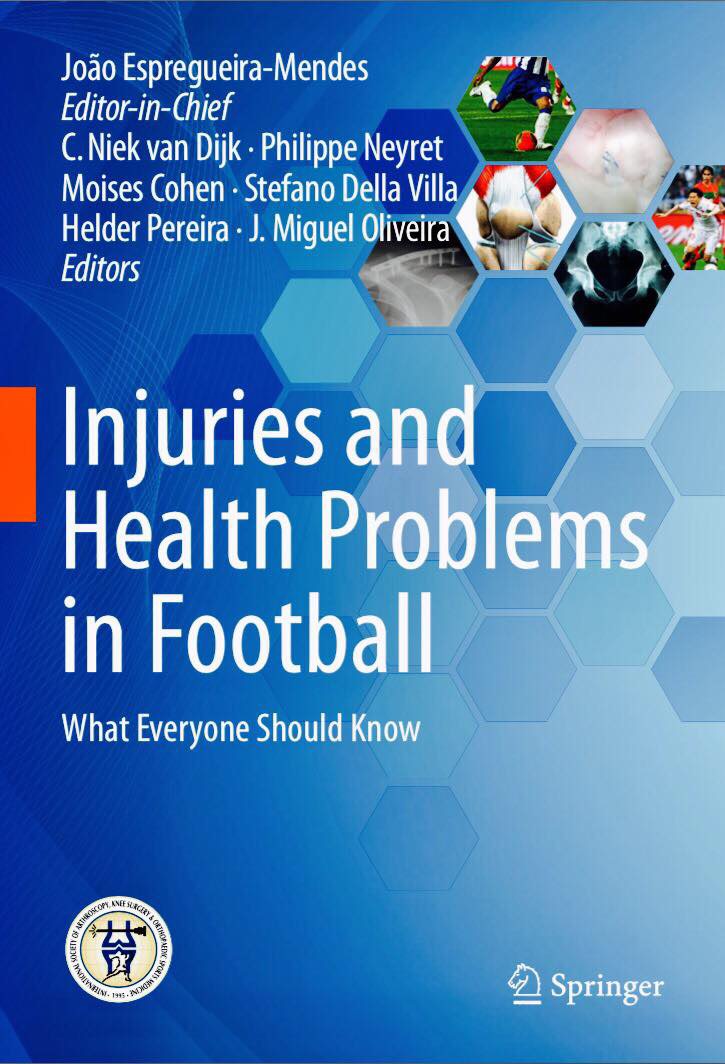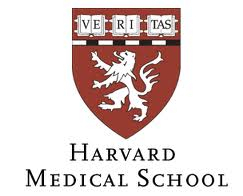
TENDON INJURIES TO THE LOWER LIMB
Non-surgical treatment
Pablo E. Gelber, Ferran Abat, Georgιos Tzoanos and Jòn Karlsson
INTRODUCTION
Despite the physiological adaptation of the tendons to different loads (1,2), tendinopathy is a clinical problem of great magnitude and it is growing in terms of prevalence (3). Tendon injuries including tendinopathy represent approximately 50% of all sports injuries (3,4). The traditional description of “tendonitis” as an inflammatory process is now obsolete, as several publications (5,6) have shown that the pathological process of the tendon is mainly degenerative (tendinosis). This is justified by the absence of inflammatory cells, the presence of areas of collagen degeneration, myxoid degeneration and an increase in ground substance and the condition is associated with the failure of the tendon repair process (5,6).
Tendinopathy is characterised by prolonged pain and is often activity related. Athletes usually respond poorly to most conservative modalities. Different pathologies like tendinosis, paratendonitis, calcifications or partial ruptures are often found in the same tendon. This indicates that there is neither a single aetiology nor a single pathogenesis that is able to explain the tendon pain (7).
Most tendinopathies in the lower limbs involve the Achilles (Figure 1) or patellar tendons (Figure 2) (8). Different studies (9-11) have reported a prevalence of patellar tendinopathy in soccer players of between 3% and 23%, with a recurrence rate as high as 20%. A similar scenario has been described for Achilles tendinopathy (12,13).
Other tendinopathies in football players include the following.
• Proximal hamstring tendinopathy, which is localised in the lower gluteal area (14). In some cases, an injury to the myotendinous union of the hamstring muscles may lead to a sciatic nerve irritation that can worsen the pain of the tendinopathy (15).
• Adductor longus tendinopathy resulting from rapid accelerations or decelerations, changes of direction and kicking (16).
• Injury to the flexor hallucis longus (FHL), related to overuse and in some cases related to trauma, such as an ankle sprain (17).
Tendinopathy is usually characterised by progressive tendon pain, tenderness to palpation, in combination with articular pain, which leads to the recurrent or long-standing impairment of athletic performance. A diagnosis can be made by ultrasound (18) and/or magnetic resonance imaging.
There are multiple therapeutic options for the treatment of tendon injuries (19). Since the underlying pathology of chronic tendinopathy can be defined as a “defect healing response”, the treatment should aim to stimulate the regeneration of the tendon, pain modulation and the restoration of normal biomechanics (19-21).
In this chapter, an update on the current conservative treatment of lower limb tendinopathies in soccer players is given.
Conventional conservative treatments have been used to reduce pain and inflammation (2,10,19-21). This treatment includes rest and/or activity modification, cold, stretching, braces, physiotherapy and biomechanical correction. The treatment is usually given in the acute setting. However, these techniques do not restore the changes in the ultrastructure of the tendon (22-24), because the structuring and maturation of collagen fibres requires mechanical stress, physiological stimulus and time.
Non-steroidal anti-inflammatory drugs
The aim of non-steroidal anti-inflammatory drugs (NSAIDs) is to reduce inflammation by inhibiting the synthesis of inflammatory factors (inflammatory cells, prostaglandins, interleukins and so on) and their use has been widespread in the management of tendinopathy for years (25,26). NSAIDs affect the activity of tenocytes and glycosaminoglycan synthesis (26). A study showed that it is possible to block the release of prostaglandins by blocking the COX with NSAIDs, leading to a decrease in the cellular production of PGE2 (26).
Glucocorticoids
The literature suggests that the majority of patients may experience a short-term improvement in terms of pain and/or function. On the other hand, patients will face a high risk of relapse at mid-term and side-effects that may even lead to a tendon rupture (27-29). In addition, two recent systematic reviews reported poorer results after the use of glucocorticoids compared with no intervention or placebo treatment at medium- and long-term follow-ups (28,29).
Despite the frequent use of corticosteroids to treat acute tendinopathies, scientific evidence reveals important damage to cellularity and tendon structure with these infiltrations (29).
Orthopaedic support devices
Orthopaedic devices (e.g. braces) are widely used in the conservative treatment of tendinopathy. However, there is no evidence to support their use (30). The use of insoles in some cases of biomechanical imbalance might have a beneficial effect on the outcome of tendinopathies.
Eccentric exercises
Eccentric exercise programmes have been proposed as a key element of rehabilitation after tendon injuries (31-35). They are supposedly able to counteract the response of defect healing, by promoting the creation of collagen fibres within the tendon (9-12,25). The literature emphasises the importance of controlled balance to load (33,35).
The “continuum” physiological model proposed by Cook et al. (7) in tendinopathy provides a basis for the protocol to be performed depending on the current clinical presentation. The protocol consists of three sets of 15 repetitions, performed twice a day, seven days a week for 12 weeks.
An up-to-date study by Romero-Rodriguez et al. (35) demonstrated that eccentric overload using isoinertial training devices (YoyoTM) produces improved muscle function and pain reduction in patients with patellar tendinopathy.
Extracorporeal shock-wave therapy
Several clinical trials have evaluated the use of extracorporeal shock-wave therapy (ESWT) for the treatment of patients with chronic tendinopathy, but the results have been inconsistent (36-40). Multiple variables are associated with this therapy (41):
• Type of shock wave generator (electrohydraulic, electromagnetic or piezoelectric)
• Wave type (radial or focal)
• Intensity (total energy per shock waves/session)
• Frequency
• Protocol of application and repetitions.
One of the important effects of ESWT on tendinopathy that can produce an analgesic effect is the inhibition of nociception with the release of endorphins and an increase in the permeability of the cell membranes of neurons (40). Evidence of the effectiveness of ESWT in the treatment of tendinopathy is inconsistent (38). However, it is widely used after sports injuries. It appears that the combination of treatments may have a synergistic effect and lead to better results (40,42). A recent study revealed better results by combining ESWT and eccentric exercises than those obtained with eccentric exercises alone (42).
Sclerosing injections
Based on the theory that neovascularisation is frequently observed in tendinopathies (43), the use of polidocanol (a vascular sclerosing agent) has been proposed (44). Polidocanol is used to sclerose areas of increased intratendinous blood flow, which is sometimes called “neovascularisation”. This can be observed (43) using high-resolution ultrasound with Doppler colour. Some studies have reported beneficial effects from the use of polidocanol for patellar tendinopathy, tennis elbow, or Achilles tendinopathy (44-46).
High-volume image-guided injection (HVIGI)
High-volume image-guided injection (HVIGI) is based on the injection of large volumes of saline solution, corticosteroids or anaesthetics that make the neovessels stretch, break or occlude (47,48). This occlusion or interruption of the neovessels may also affect their accompanying innervation (49,50).
HVIGI with aprotinin produced a significant improvement in both pain and function in a 12-month short-term follow-up (50).
US-guided intratendon application of galvanic current
In recent years, the ultrasound-guided intratendon application of galvanic current (Figure 3) has been introduced. One of these techniques is intratissue percutaneous electrolysis (EPI®), which has become more relevant in the scientific literature (51-53), given the good results produced in the treatment of refractory tendon injuries in comparison with other previous non-surgical treatments.
The application of ultrasound-guided intratissue percutaneous electrolysis produces a non-thermal electrochemical reaction centred on degenerated tissue (tendinosis). This produces a controlled local inflammatory reaction that may lead to the regeneration of damaged tissue (52). Intratissue percutaneous electrolysis produces a localised organic reaction. The subsequent regeneration of the affected tissue is followed by the production of new immature collagen fibres that become mature by means of eccentric stimulus (51,53). This has shown beneficial effects in the short and long term in terms of pain and function.
Platelet-rich plasma
Injections of platelet-rich plasma (PRP) have been used for the treatment of tendinopathy. The aim of PRP treatment is to provide cellular and humoral mediators to induce healing in areas of degeneration (54). PRP is a widespread treatment option for the treatment of chronic tendon injuries and its beneficial effects have been demonstrated in several studies (55-58).
A recent experimental study showed that the use of PRP in tendinopathy produced an increase in fibroblasts and bone marrow stem cells. Cell proliferation was twice as high and the PRP-treated group also showed a significant increase in type I and III collagen when compared with the control group (57). Another in-vitro study in humans showed that, following the application of PRP, there was increase in cellular proliferation, collagen production in tenocytes, an overexpression of the receptor of vascular endothelial growth factor-A (VEGF-A) and an increase in the concentration of transforming growth factor beta (TGF-B), indicating an increase in the production of type I and III collagen (58). Despite these experimental findings, the huge differences between different techniques for preparing PRP should be highlighted (59). This leads to different volumes and concentrations of platelets, pre-activated or non-pre-activated preparations, the presence of leukocytes and differences in the number of injections and the exact interval between injections (59). With the current research, it is difficult to draw conclusions about the effectiveness of PRP treatment for tendinopathy (60).
Others modalities
Other proposed treatments, such as ultrasound (US), deep transverse friction massage (DTFM) or acupuncture (31,61,62), have reported disappointing and widely questioned results. Finally, it has recently been proposed that adult stem cells would be good candidates for the regeneration of tendons (63). It has been suggested that they differentiate into tenocytes and that they would subsequently be involved in the healing process by producing collagen and remodelling the extracellular matrix. Although in-vitro research has produced encouraging results, this form of treatment is still the subject of research and its clinical benefits remain uncertain.
Considering the various conservative treatment options that are available, an algorithm for the non-surgical treatment of lower limb tendinopathies in soccer players is suggested (Figure 5).
DISCUSSION
Multiple techniques have been described for the treatment of lower limb tendinopathies/tendinosis and, although some of them (19,51) are emerging as the most accepted treatment option, more RCTs are still needed clearly to establish the treatment protocol that is preferable. Although the authors suggest a treatment algorithm, there is insufficient evidence from high-level RCTs to draw any strong conclusions.
Doubts have mainly centred on the fact that there are few controlled prospective studies that analyse all the aspects of tendinosis and few studies that investigate the early stages of these processes and their healing mechanisms (5-7). The exact mechanism by which tendinopathy develops in humans is not yet clearly understood. Despite its prevalence, the precise pathogenic mechanisms of tendinopathy are not clear (64).
One of the clinical effects that eccentric training might have in tendinopathy relates to pain modulation (32). However, there is little evidence to suggest that isolated eccentric exercise reduces pain in tendinopathy compared with concentric exercise.
In the treatment of patellar tendinopathy, there is conflicting evidence that eccentric exercises are superior to other load programmes, such as eccentric-concentric exercises (65-67). Eccentric work on an inclined plane did not improve functional outcomes when it was performed during a competitive season in volleyball (66). In another study, continuous sporting activity did not compromise clinical outcomes at 12 months, as long as the sport was introduced incrementally, ensuring minimal pain during and after loading (67). Further studies are needed to assess the unique effects of an eccentric strengthening programme. Eccentric loading should be considered in conjunction with concentric loading, rather than isolated eccentric loading, in Achilles and patellar tendinopathy. Patients with substantial muscle weakness may benefit from a programme of progressive eccentric-concentric loading (65). On the other hand, maximum eccentric loading may be best for some groups of patients, as it enables adaptive changes in the tendon (34,35).Despite the fact that eccentric muscle training has become the dominant conservative strategy in treating Achilles and patellar tendinopathy, with great results in the majority of cases, some patients do not respond to this treatment (66).
Despite more than 15 years’ experience of the use of intratissue percutaneous electrolysis and its widespread deployment in sporting clubs around the world, this technique has only become popular in recent years (51-53). While this technique focused on biological tissue recovery, complementary functional and biomechanical recovery was obtained with eccentric exercise.
In terms of the effectiveness of ESWT for tendonitis, no conclusive results can be drawn, due to unclear clinical effectiveness (68,69). This is consistent with a recent study that showed that ESWT had no effect in athletes with patellar tendinopathy who compete actively (38). There is currently controversy relating to the use of ESWT in the treatment of patellar tendinitis (38,41), as well as Achilles tendinopathy (69). The mechanisms of the therapeutic effect of ESWT in tendinopathy with calcification are also uncertain (40).
When using PRP, the aim is to enhance the natural healing process at the site of injury through the action of growth factors (PDGF, IGF-1, VEGF, bFGF, TGF-β1, EGF and so on) to promote matrix synthesis and the healing of the injured tissue (54-56,70). It should be noted that the delicate balance between these cytokines might have important implications in the control of angiogenesis and fibrosis.
Although many studies have reported good results using PRP (54-58,71,72), others have shown no differences in comparison with a placebo (73,74). At the same time, many questions have been raised about the optimal concentration of platelets, the phase of the injury during which is it better to perform the infiltration or how it should be prepared.
The use of polidocanol is based on the theory that neovascularisation is associated with the mechanism underlying tendinopathy (43,44). However, it is unclear whether this is a causal agent in the pathophysiology of tendinopathy (6,7). In fact, these “neovessels” may be associated with the ingrowth of nerves in the areas of pathological tendons (43) and it is possible that these nerve fibres are the pain generators in chronic tendinopathy. A priori, polidocanol injections may not only sclerose the veins but may also eliminate the pain nerve fibres (44,45). Although polidocanol injections appear to provide pain relief, the role they may play in the ultimate tendon healing is unclear. Some studies associating sclerosing injections with eccentric training have shown a decrease in pain (45). Nonetheless, further studies are needed to evaluate its safety (possible nerve damage), effectiveness, determination of the injection protocol (volume/concentration) and the combination with other therapies.
Some authors advocate the use of HVIGI in treating refractory tendinopathy (47,48,50), but more randomised controlled trials are needed in order to recommend its use.
G. Tzoanos
Tzoanos Sports Clinic, 18 Thiseos str,
71201 Heraklion, Crete, Greece
e-mail: tzoanos@hotmail.com


